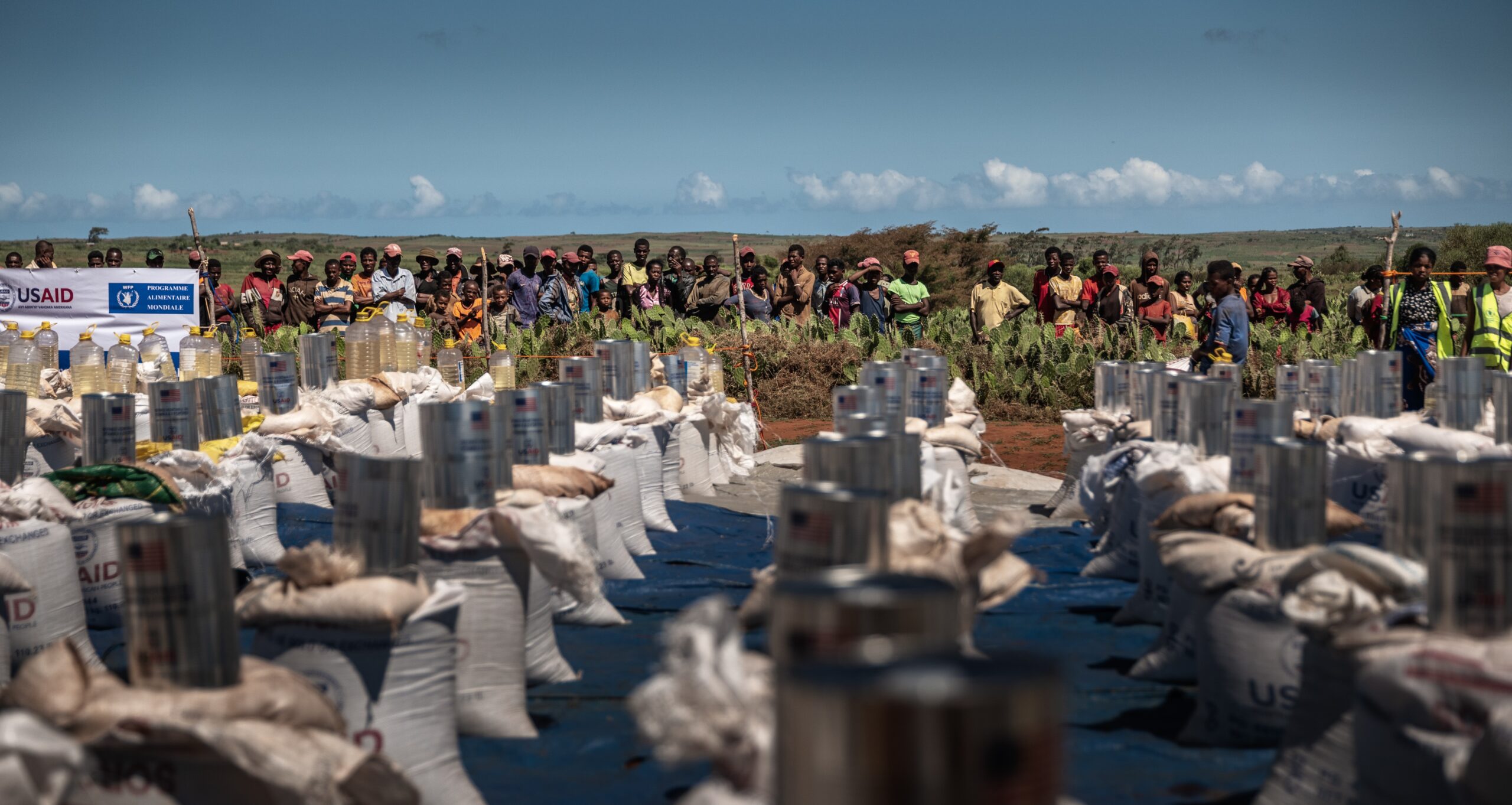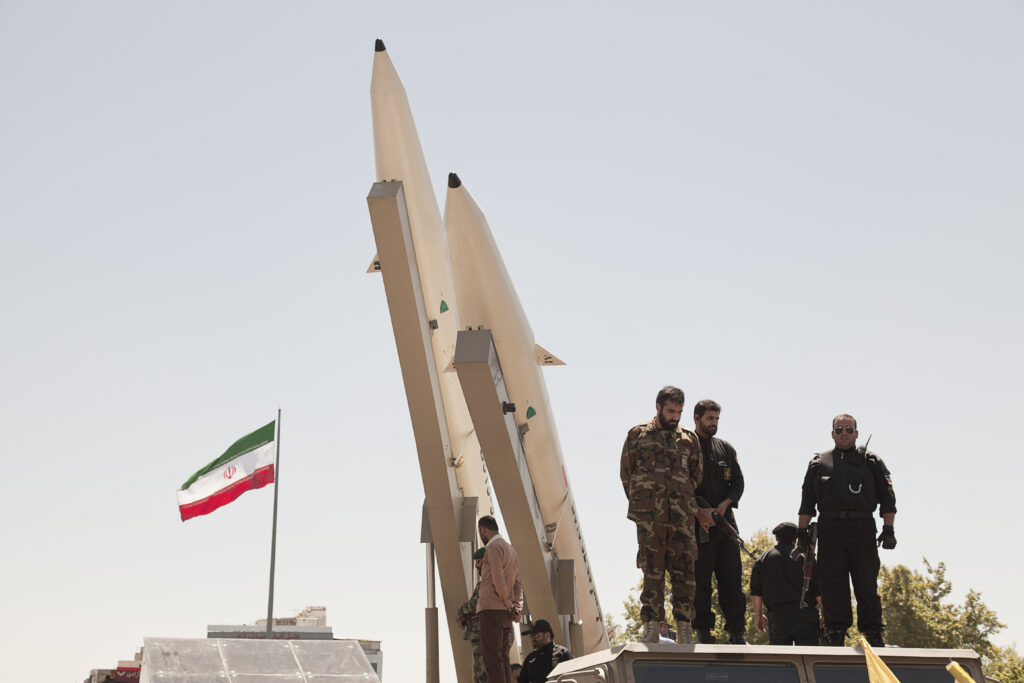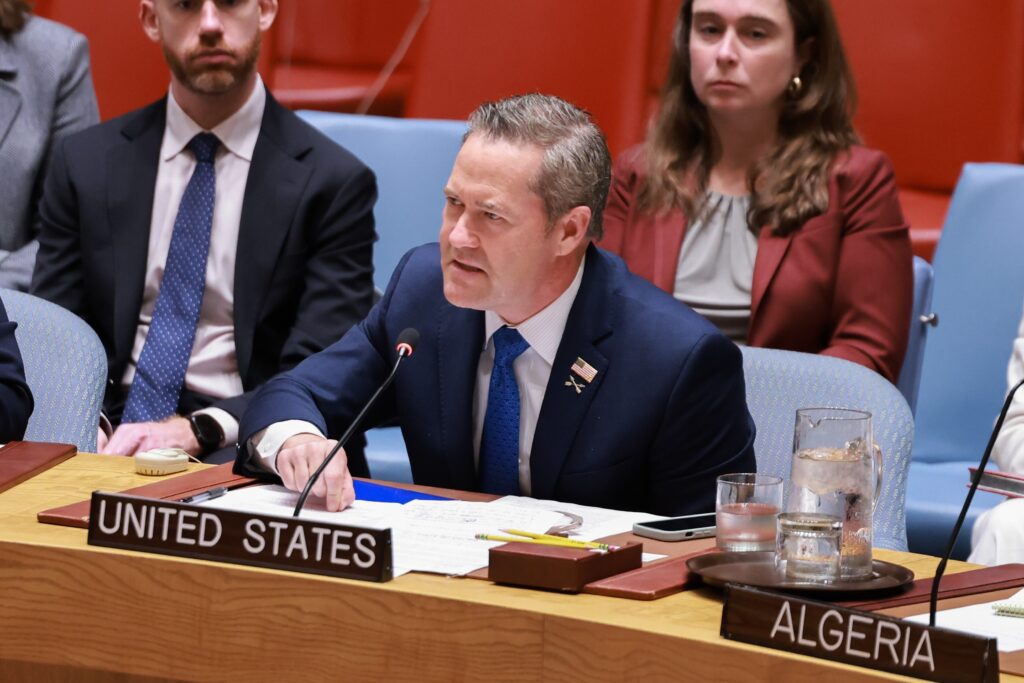A Conversation with Jordie Hannum, Executive Director of the Better World Campaign
Jordie Hannum, Executive Director of the Better World Campaign, recently returned from his second visit to Ukraine since the Russian invasion of the country nearly three years ago. With a chance to witness powerful humanitarian assistance on the ground, we wanted to know how he was thinking about the growing concept of “localization.” Localization – which has emerged as a topic of vigorous debate in development circles in recent years – is an approach to assistance that emphasizes capacity building and direct support for local governments and organizations closest to the need. A key forum to advance localization is actually (and perhaps surprisingly) the world’s largest distributor of aid: the United Nations.
Here are some insights from Jordie on why localization should be supported but should not be used as weapon to slash overall foreign assistance and UN funding.
Q: What is “localization” in the context of international development?
While there is no official definition, it generally refers to empowering local governments and civil society partners with more control and ownership over development initiatives. It was made a part of the mainstream humanitarian reform agenda during the UN’s 2016 World Humanitarian Summit. At that time, 30 governments — including the U.S. – agreed to a number of items that included an increase in multi-year funding to local and national aid agencies, removing barriers that block partnerships with local and national aid agencies.
Q: What are the benefits of implementation?
Local actors often have the best understanding of a community’s assistance and protection needs that can, at times, enable quicker and more cost-effective solutions. They are also often the first responders during a crisis, with solid networks within the community, helping them identify the most vulnerable groups in need of assistance. As such, the UN and its Office for the Coordination of Humanitarian Affairs have been pushing to ensure national and local partners are more involved in decision-making and implementation in any humanitarian and development response.
Q: How quickly can we make the transition to entirely locally-led development?
It’s incumbent for the UN and the U.S. to follow through on their 2016 “Grand Bargain” promises to support localization and increase the resources channeled from large countries and international organizations to national groups. At the same time, some in Washington make it seem like it’s a simple as flipping a switch. For example, groups like the Heritage Foundation talk as though there are a bevy of local and faith-based partners ready to step in immediately everywhere. In their proposals, they prioritize severe UN funding cuts, then a transfer of a portion of those dollars to local entities and then voilà — a “far less expensive and more effective alternative for aid delivery.” The reality is far more complicated.
Why? In short, diverting resources too quickly would result in a lose-lose proposition – a loss of services and an ineffective use of scarce international aid assistance. Not to mention, while a focus on funding is not surprising, this definition of localization is limited. That is, the point of development is not to fund NGOs, it’s to serve people who need support.
“Diverting resources too quickly would result in a loss of services and an ineffective use of scarce international aid assistance… The point of development is not to fund NGOs, it’s to serve people who need support.”
Q: What are some challenges of implementation?
First off, as noted, the localization concept remains poorly defined. To give just one example, who qualifies as “local” and who is the best representative in a particular situation is a source of debate. Is it just input from national entities or does input from village bodies carry more weight? Secondly, there is limited evidence to date to show that localization has had a broadly positive effect.
On the other hand, there is evidence to show that providing assistance directly to local agencies, without understanding the situation on the ground, can be problematic. For example, local NGOs – often quite literally in the line of fire – routinely struggle with limited capacity and high turnover, which impacts service delivery, as well as less sophisticated systems to track finances and impact. Another key challenge – and where the UN is uniquely positioned to play a role – is around neutrality. Because international organizations like the UN are third parties, they’re able to develop aid infrastructures and distribute resources without bias. This is particularly important in conflict zones where local groups may have political or religious affiliations that could complicate aid delivery. In country, people in need of humanitarian assistance frequently prefer to receive support from the United Nations, because it is perceived as neutral, as well as being seen by some as more professional.
“Because international organizations like the UN are third parties, they’re able to develop aid infrastructures and distribute resources without bias.”
Q: How has the UN approached localization?
Circling back to Ukraine, I saw firsthand examples of how the UN is fostering well-coordinated partnerships that can address urgent needs while paving the way for local empowerment. Earlier this year, I visited Kharkiv, Ukraine’s second largest city and a mere 20 miles from the Russian frontlines. Due to constant shelling, above-ground schools in the city have been shuttered, requiring huge numbers to either forego learning or study online. In response, local government conceived the idea for the world’s first underground network of “subway schools” to help children continue their education. In late 2023, several subway stations were equipped with classrooms, bathrooms, communication networks and video surveillance. When I first visited Ukraine, over 2,100 children had been enrolled in 27 underground schools. This unprecedented project was completed with the assistance of the UN Refugee Agency and UNICEF in only ten weeks’ time — a timeline not possible without UN support. In addition, this was all done in partnership with the Kharkiv Professional Development Foundation and local authorities.
“When I first visited Ukraine, over 2,100 children had been enrolled in 27 underground schools. This unprecedented project was not possible without UN support.”
Q: Does the UN work with faith-based partners?
Absolutely. Using Ukraine as an example again, given the success of the subway school initiative, President Zelensky requested the UN Refugee Agency contribute further and help build additional underground classrooms. These “bunker schools”, which I visited in October 2024, are being developed in partnership with the Lutheran World Foundation (LWF). UNHCR is helping prepare the space by repairing walls and ceilings and installing lighting and ventilation. LWF will offer psychosocial support for the children, their caregivers and school support staff. In addition, the project is implemented in collaboration with the municipality and the Ministry of Education, with the former financing school meals and transport of students each day, and the Ministry covering the salaries of teachers and support staff. This is partnership in action on an issue of the highest importance – helping educate children in wartime. (Of note, the vast majority of the internally displaced in Kharkiv—including recent evacuees from frontline areas wish to remain in the city, due in part to the services provided by the UN.)
This is not isolated to Kharkiv. Across Ukraine, 16 out of UNHCR’s 20 partners are national organizations and 92% of funding goes through local and faith-based organizations. This is also the case for other sizable UN agencies. UNICEF has a long history with faith-based organizations; the World Food Program (WFP), the globe’s largest humanitarian supporter, works closely with more than 1,000 NGOs and nonprofits around the world.
Q: You say the UN plays an important role but some suggest “cutting out the middle man” by eliminating investment in the UN. What are the risks of such an approach?
As noted, drastic funding cuts can lead to a loss of critical services, ineffective aid distribution and weakened coordination among local actors. For example, in some countries, there may be dozens or hundreds of local organizations of varying capacity. Thus, having a skilled UN coordinator to vet relevant organizations before they are chosen is essential.
“Drastic funding cuts can lead to a loss of critical services, ineffective aid distribution and weakened coordination among local actors.”
In some other countries, there can be very few local options available, which is why massive, across-the-board cuts to UN agencies would be highly problematic. In fact, in 2020, when the Trump Administration called for a prohibition on all funding to the World Health Organization (WHO), with some officials saying that an array of local groups could pick up the slack, Secretary of State Pompeo had to reverse course almost immediately, acknowledging the policy was unworkable in at least seven countries due to a lack of service providers.
Q: How have UN partnerships with local bodies created lasting impacts?
I gave a few examples above. Let me offer one more from Indonesia. I traveled to Timor Island in October 2024, where the Food and Agriculture Organization (FAO) and USAID taught villagers water-efficient farming techniques. These techniques have now been integrated into the local policies and curricula of several universities. The UN is now gone; the knowledge is not. When one village elder — whose family had lived on the plot of land for generations — was asked what this technique meant to the community, he stated, “It’s the first time we have ever felt food secure.”
Q: What is the recommended approach for transitioning from international to local aid delivery?
It is essential to make development decisions with a stethoscope and not a siren — to listen to the concerns of local residents first and then determine next steps. In some cases, funding allocations may need to be shifted, in other cases, local actors can exercise control in other ways by crafting the agenda or sharing expertise. Alternatively, international partners can support local actors’ integration into international markets or connect them with donors. International organizations also provide evidence on the impact of locally-led approaches. In this scenario, the UN helps transition aid to local providers who have shown they have the capacity and ability to provide support over the long-term. In the end, the goal of international development is to create conditions for communities to complete what former Republican U.S. Agency for International Development (USAID) Administrator Mark Green called, “The Journey to Self-Reliance.”
“It is essential to make development decisions with a stethoscope and not a siren — to listen to the concerns of local residents first and then determine next steps.”




